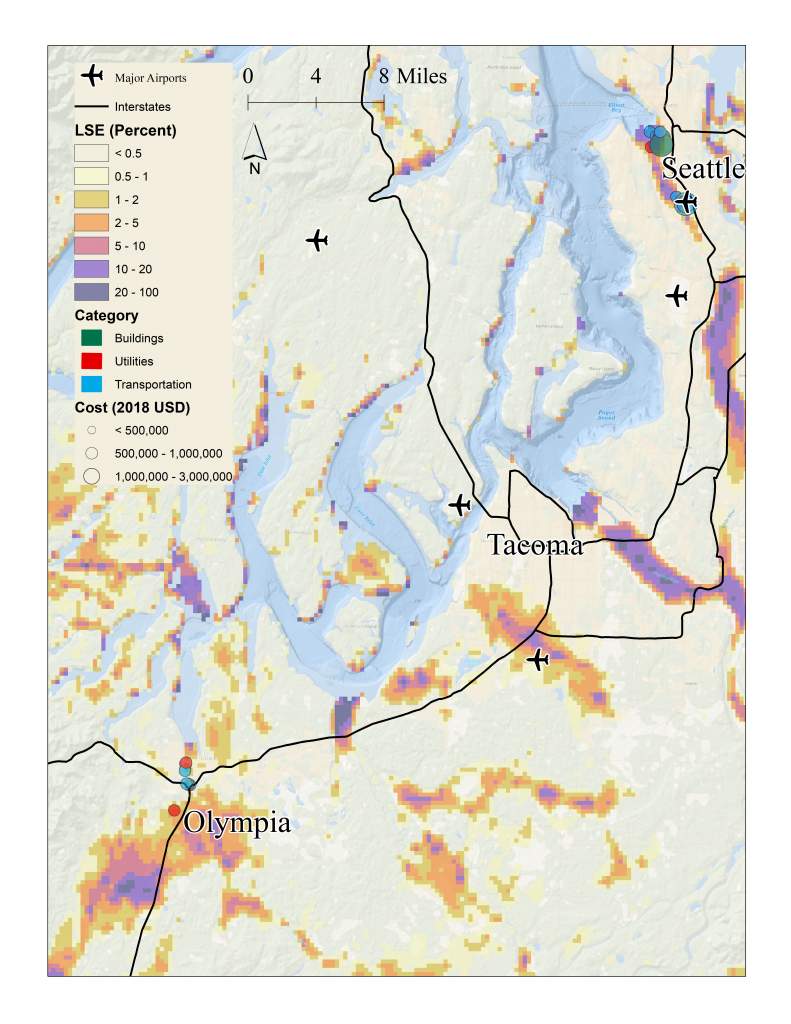February 2021
SSA 2021 abstract:
Mapping of seismic-induced soil liquefaction is a common practice after earthquakes to help local authorities devise better disaster preparedness plans after a seismic event and to provide data for the research community. Many of those reports provide limited and inconsistent geographic information. Some of the reconnaissance reports provide coordinate-based region locators, and others provide more qualitative, general locations, while some more recent efforts provide digital polygons. The inconsistencies in how the liquefaction field investigations are communicated have led to the need for more uniform datasets.
In addition, with the increase in availability and resolution of both aerial and satellite imagery, there is the potential for automatic detection and mapping of liquefaction after earthquakes using image processing and artificial intelligence algorithms. Therefore, the aim of this research is to build a uniform liquefaction image library or repository from aerial and satellite imagery which will provide digital polygons for individual liquefaction features – sand boils, lateral spreading, and settlement. The liquefaction image library will include labels providing such information as infrastructure impacted and confidence level in the feature type and boundary. To ensure higher accuracy of liquefaction detection, image analysis methods require that the liquefaction features be outlined with polygons and that those polygons be limited to only liquefaction features. We present our preliminary liquefaction image library and demonstrate its use in automated models of liquefaction detection from post-event imagery.


Publications
Rashidian, V. and Baise, L.G. (2020). Regional efficacy of a global geospatial liquefaction model. Engineering Geology. Volume 272, 105644.
Zhu, J., Baise, L.G., and Thompson, E.M. (2017). An Updated Geospatial Liquefaction Model for Global Application, Bull. Seism. Soc. Am. 107 (3), doi: 10.1785/0120160198
Moss, R.E.S, Baise, L.G., Zhu, J., and Kadkha, D. (2017). Examining the Discrepancy between Forecast and Observed Liquefaction from the 2015 Gorkha, Nepal Earthquakes. Earthquake Spectra, Volume 33, No. S1, pages S73–S83.
Zhu, J., Baise, L.G., and Thompson, E.M. (2016). Liquefaction observations from ten earthquakes in the US, Japan, China, and Taiwan: U.S. Geological Survey data release, http://dx.doi.org/10.5066/F7NC5ZB8.
Zhu, J., Daley*, D., Baise, L.G., Thompson, E.M., Wald, D.J., Knudsen, K.L. A (2015). A Geospatial Liquefaction Model for Rapid Response and Loss Estimation. Earthquake Spectra, 31 (3), 1813-1837. doi:http://dx.doi.org/10.1193/121912EQS353M.
Oommen, T., Baise L.G., Gens R., Prakash A., and Gupta R.P. (2013). Documenting Earthquake-Induced Liquefaction using Satellite Remote Sensing Image Transformations. Environmental and Engineering Geosciences, Vol. XIX (4), 303-318.
Discussion of “Mapping Liquefaction Potential Considering Spatial Correlations of CPT Measurements” by Chia-Nan Liu and Chien-Hsun Chen Baise, LG, Lenz, JA, and Thompson, EM Journal of Geotechnical and Geoenvironmental Engineering, 134(2):262-263.
Liquefaction susceptibility mapping in Boston, Massachusetts
Brankman, CM and Baise, LG Environmental and Engineering Geoscience, 14(1):1078-7275.
Spatial variability of liquefaction potential in regional mapping using CPT and SPT data Lenz, JA and Baise, LG Soil Dynamics and Earthquake Engineering, 27(7):690-702.
Liquefaction hazard mapping – Statistical and spatial characterization of susceptible units
Baise, LG, Higgins, RB, and Brankman, CM Journal of Geotechnical and Geoenvironmental Engineering, 132(6):705-715.
Three-dimensional liquefaction potential analysis using geostatistical interpolation
Dawson, KM and Baise, LG Soil Dynamics and Earthquake Engineering, 25(5):369-381. doi.org/10.1016/j.soildyn.2005.02.008
